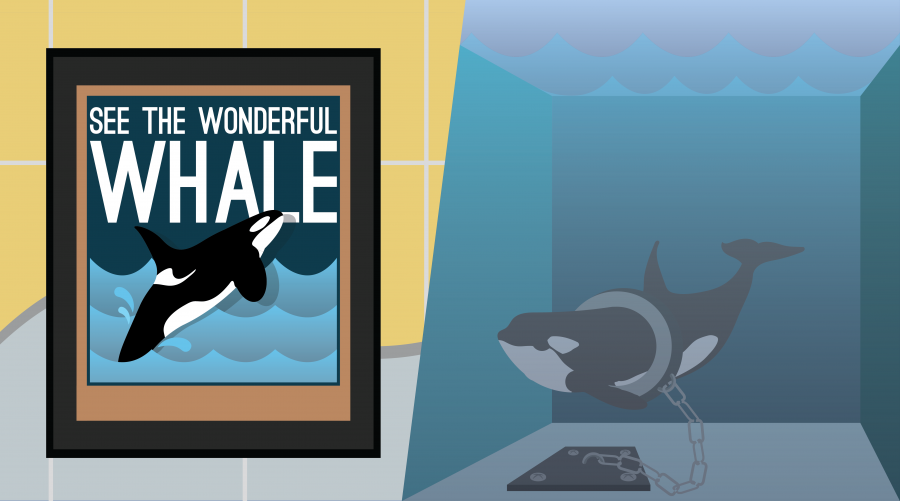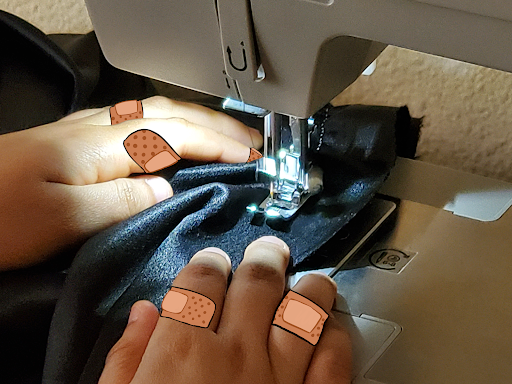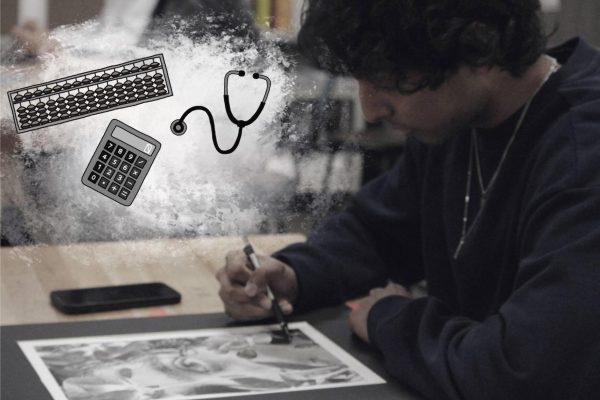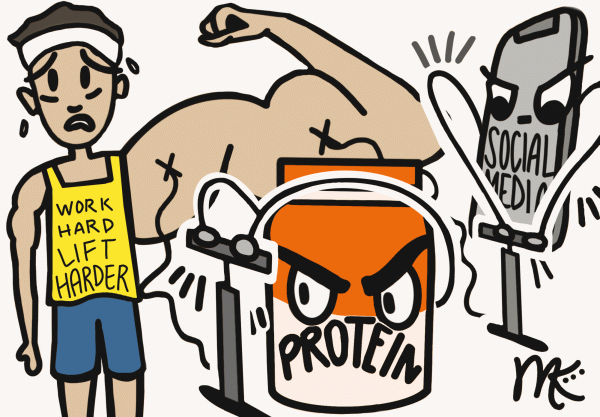In death Killer Whale Tilikum finds freedom, raising awareness for whales in captivity
Marine mammals have been subjected to captivity by Marine Mammal Parks for years. Tilikum, a Killer Whale, performer at SeaWorld and victim to such cruel captivity died Jan.6, raising awareness for other whales.
In November 1984, yet another whale was added to the growing statistic of orcas forced into cruel captivity.
In a matter of seconds, sharp, foreign objects invaded the peaceful blue waters of Iceland. Hunters violently threw slings and nets into the sea in hopes of capturing their next big profit – a killer whale.
The cries of one particular whale, 2-year-old Tilikum, reverberated across the waters and flooded the ears of his helpless pod who watched as their own kin futilely searched for a way out of the net that would transport him to his new home: a concrete box.
Tilikum remained in such captivity for 33 years at SeaWorld, following decades of exploitation by marine-mammal abuse industries that forced poor living conditions and unnatural behavior during performances.
On Jan. 6, Tilikum died at SeaWorld in Orlando. The cause of death is not yet clear, but preceding his death, he was suffering from a “persistent and complicated bacterial lung infection,”according to USA Today. The large public response his death received was partly due to the controversial documentary Blackfish, detailing SeaWorld’s cruel practice of putting wild orcas in captivity.
Unlike any other death, Tilikum’s passing has produced a rather unusual reaction among the public. Of course, to mourn death is human nature. However many are conflicted whether to grieve or to be relieved. When many people think of Tilikum, the only image that is produced is that of an violent animal who killed three trainers.
However, that is not the only side to his story – his legacy. Yes, to describe Tilikum as violent and disobedient is justified. But only justifiable in the context of the cruel and stressful captivity he was forced into that induced such behavior. In fact, under examination of Tilikum’s unfit living circumstances and the silent, yet brutal situation of many other marine mammals held captive at parks – specifically SeaWorld – Tilikum’s behavior can be observed as a distressed reaction.
Whales and dolphins need to swim at least 100 miles a day, hunting, playing and interacting. In a concrete tank, to these magnificently large animals, the size of a swimming pool, none of this is possible. In captivity, these animals have very little space and cannot behave naturally. Tilikum’s death is a reminder that killer whales, or any marine animals, are not meant to be held in captivity.
By no means does my opinion neglect or lack sentiment to the passing of Keltie Byrne, Daniel Dukes and Dawn Brancheau, SeaWorld trainers who were killed tragically by Tilikum’s stress induced actions.
But alongside the mourning of these individuals, we should not forget the reasons that led to and eventually permitted their death: captivity. For years, Orcas have been suffering mentally and physically only to fill the pockets of marine parks, like SeaWorld. In nature, aggression towards humans and among orcas is highly uncommon but the continuing stress of living in incompatible social groupings inside small tanks at SeaWorld causes them to act aggressively, presenting a danger both to employees and other whales alike.
Tilikum, a magnificent and intelligent apex predator, devolved into a tortured animal solely because of the captivity he was forced into. We must come out of the event of his death not with relief and satisfaction, but with greater determination to end the cycle of cruel captivity on marine animals.
Because of public outrage, SeaWorld agreed to end captive breeding of killer whales and after the generation of whales present at the parks, move towards a future that eventually will no longer include orcas. However, there are still other parks and aquariums that continue to subject marine mammals of all kinds into captivity.
It is important to recognize both the good and the bad of Tilikum’s legacy, as they are real examples of the consequences of unjust and inhumane captivity many marine parks capitalize on. In his death, Tilikum found freedom. Let us work to assure that other whales in captivity will soon find freedom too.
What you can do to help.
Personal: Educate your friends and family on Marine Mammal Parks like Miami Seaquarium and SeaWorld, and the cruel practice of captivity they engage in.
Political: Contact your congressman or congresswoman and elected officials of your region and tell them not to support Marine Mammal captivity. Make your voice heard in your community and to local leaders that have greater ability to facilitate change.
Societal: Support organizations that work to help aid marine mammals around the globe. A few are listed below:
Dolphin + Whale Project: http://savedolphins.eii.org/campaigns/dwp/
Marine Connection: http://marineconnection.org/
Cetcean Society International: http://csiwhalesalive.org/index.html
International Marine Mammal Project: http://savedolphins.eii.org/campaigns/sjd/

Junior, Briana Thomas, is a South Asian writer whose stories are unfiltered outlets that voice her passions, opinions and beliefs. Briana is intrigued...








